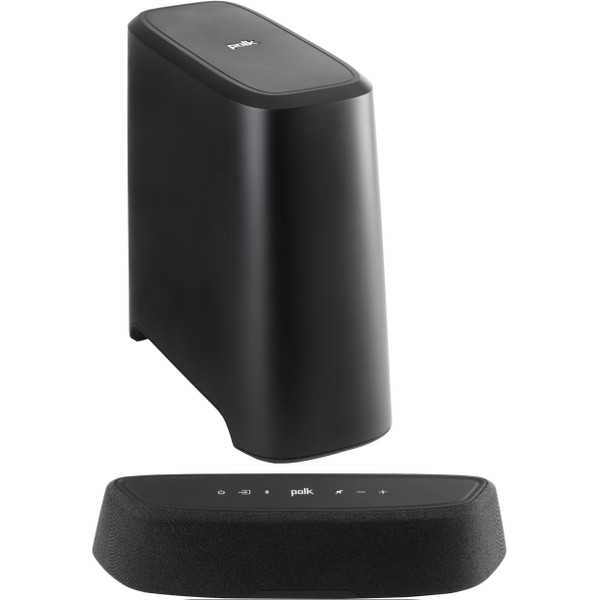How Does a Wireless Microphone Work: Unveiling the Tech Magic!
A wireless microphone works by transmitting audio signals through radio frequency waves, eliminating the need for physical cables. Wireless microphones have revolutionized the way performers and public speakers communicate.
These devices provide the freedom to move around without being constrained by tangled wires. But have you ever wondered how a wireless microphone actually works? We’ll explore the inner workings of these remarkable devices. We’ll delve into the technology behind wireless microphones, explaining how they transmit audio signals without the need for physical cables.
So, if you’re curious to learn more about the magic that makes wireless microphones possible, keep reading!
Understanding The Basics
A wireless microphone is a versatile tool that allows performers, speakers, and presenters to roam freely without being tethered to cables. But have you ever wondered how this technology actually works? In this blog post, we will dive into the fundamentals of wireless microphones, starting with differentiating wired and wireless microphones. We will then explore the components that make up a wireless microphone system. So let’s get started!
Differentiating Wired And Wireless Microphones
Before delving into the specifics of a wireless microphone, it is important to understand the key differences between wired and wireless mics. While both serve the same purpose of capturing and amplifying sound, they employ different methods to achieve this.
A wired microphone is connected to an audio system using a physical cable. The cable carries the audio signal captured by the microphone to the sound system, where it is amplified and distributed. This direct connection ensures a reliable and stable signal flow, making wired microphones a popular choice for studio recordings and live performances.
On the other hand, a wireless microphone utilizes radio frequency (RF) technology to transmit the audio signal from the microphone to a receiver unit. This receiver unit is then connected to the audio system, allowing for seamless amplification and distribution of the sound. The wireless functionality of these microphones provides freedom of movement, making them ideal for presentations, stage performances, and events where mobility is essential.
Components Of A Wireless Microphone System
A wireless microphone system consists of several essential components that work together to ensure high-quality audio transmission.
- Microphone Transmitter: The transmitter is the handheld or body-worn device that captures the sound and converts it into an electrical signal. This signal is then modulated and transmitted via radio waves to the receiver unit.
- Receiver Unit: The receiver unit is responsible for picking up the radio signals transmitted by the microphone and converting them back into an audio signal. This audio signal is then sent to the audio system or amplifier for further processing and amplification.
- Antennas: The antennas serve as the channels for wireless signal transmission and reception. They are essential for maintaining a strong and clear connection between the transmitter and the receiver unit.
- Batteries or Power Supplies: Both the microphone transmitter and receiver unit require a power source to operate. Battery-powered systems offer portability, while certain installations may use AC power supplies for continuous operation.
- Frequency Selection: Wireless microphones operate on specific frequency ranges. It is crucial to select a frequency that is free from interference to ensure uninterrupted transmission. Some wireless systems include frequency agility features to automatically find and switch to a clear frequency.
By understanding the differences between wired and wireless microphones, as well as the components of a wireless microphone system, you can appreciate the technology behind these devices and make informed decisions when choosing the right microphone for your needs.
Transmission Technology Explained
Transmission technology is a crucial component of wireless microphones, allowing users to freely move and effortlessly transmit their voices or music without being hindered by cables. Understanding the different transmission technologies used in wireless microphone systems is essential to choosing the right system for your needs. In this section, we will explore the various transmission technologies commonly used in wireless microphones, including frequency modulation, UHF vs VHF systems, and digital wireless microphone technology.
Frequency Modulation And Its Role In Wireless Microphone Transmission
Frequency modulation, or FM, is the method used by wireless microphones to transmit audio signals over the airwaves. In FM, the carrier signal’s frequency is varied in accordance with the variations in the audio signal. This modulation technique ensures that the wireless microphone can accurately reproduce the original sound, even over long distances.
In a wireless microphone system, the audio signal from the microphone is first converted into an electrical signal, typically using a transducer like a microphone capsule. This electrical signal is then modulated onto a high-frequency carrier signal.
FM offers several advantages for wireless microphone transmission. Firstly, it provides excellent sound quality, as it is less susceptible to noise interference. Additionally, FM allows for a wider transmission range and better signal stability compared to other modulation techniques.
Uhf Vs Vhf Wireless Microphone Systems
Wireless microphones operate on either the UHF (Ultra-High Frequency) or VHF (Very High Frequency) spectrum. Each frequency range has its own characteristics and considerations.
| UHF Systems | VHF Systems |
|---|---|
| UHF systems operate on frequencies between 300 MHz and 3 GHz. | VHF systems operate on frequencies between 30 MHz and 300 MHz. |
| UHF offers a larger number of available channels, making it suitable for densely populated areas. | VHF has a shorter wavelength, allowing for better signal transmission in open areas with minimal obstacles. |
| UHF systems are less prone to interference from other wireless devices. | VHF systems may experience interference from television and radio broadcasts. |
Digital Wireless Microphone Technology
Digital wireless microphone technology is an advancement in transmission technology that offers several benefits compared to traditional analog systems. Instead of transmitting the audio signal as analog waves, digital systems convert the audio into digital data using an analog-to-digital converter.
Some advantages of digital wireless microphone technology include improved sound quality, increased transmission stability, and the ability to encrypt the signal for enhanced security. Digital systems also allow for a higher number of simultaneous channels, reducing the likelihood of interference in crowded environments.
Receiver And Transmitter Functions
A wireless microphone operates through the functions of a receiver and a transmitter. The receiver picks up the audio signal while the transmitter converts it into a wireless signal, allowing for seamless communication or performance.
Exploring The Receiver’s Role In Signal Reception
A wireless microphone system relies on the seamless interaction between its receiver and transmitter functions to deliver crisp and clear audio. Let’s start by understanding the pivotal role of the receiver in signal reception.
The receiver is an essential component of the wireless microphone system that captures and processes the audio signals sent by the transmitter. It acts as the central hub for signal reception, converting the radio waves transmitted over the air into electric signals that can be amplified and reproduced.
When the receiver picks up the radio signals, it demodulates and decodes them, extracting the original audio information from the carrier wave. The decoded audio signals are then sent to an amplifier or audio console for further processing and amplification.
In order to ensure optimal signal reception, receivers are equipped with multiple antennas that help capture the radio signals emitted by the transmitter. These antennas are strategically positioned to maximize signal strength and minimize interference.
Transmission Process And The Transmitter’s Function
Now that we’ve explored the receiver’s role, let’s delve into the transmission process and the vital function of the transmitter in a wireless microphone system.
The transmitter, as the name suggests, is responsible for converting the audio signals coming from the microphone into radio waves that can be transmitted wirelessly. It essentially acts as a bridge between the microphone and the receiver, ensuring that the audio signals reach the receiver seamlessly.
When you speak into a wireless microphone, the sound waves are converted into electrical signals by the microphone’s internal components. These electrical signals are then picked up by the transmitter, which processes and encodes them into a radio frequency signal.
The transmitter then broadcasts this radio frequency signal, carrying the encoded audio information, to the receiver. It does so by leveraging an antenna that efficiently transmits the radio waves over the air.
Antennas And Their Importance In Wireless Microphone Systems
Antennas play a crucial role in wireless microphone systems, ensuring reliable signal transmission between the transmitter and receiver. Let’s take a closer look at their importance.
Wireless microphone systems employ two types of antennas: the transmitter antenna and the receiver antenna. The transmitter antenna is responsible for transmitting the radio waves carrying the audio signals from the microphone, while the receiver antenna captures and receives these signals.
The location and orientation of these antennas are vital in optimizing signal strength and minimizing interference. Proper antenna placement and alignment maximize the system’s overall performance, helping to ensure that the audio signals are effectively transmitted and received without distortion or dropout.
It’s worth noting that different wireless microphone systems may utilize different types of antennas, such as whip antennas, dipole antennas, or even directional antennas. The choice of antenna depends on various factors, including the range of the system, the environment in which it is being used, and the desired signal coverage.
In conclusion, the receiver and transmitter functions are integral to the operation of a wireless microphone system. The receiver captures, processes, and converts the radio signals sent by the transmitter into audio signals, while the transmitter encodes and transmits the audio signals wirelessly to the receiver. Antennas play a critical role in ensuring strong and reliable signal transmission, enabling the system to deliver high-quality audio in various settings.
Ensuring Seamless Connection
Wireless microphones have revolutionized the way we communicate and perform on stage. Whether it’s a live concert, a public speaking event, or a broadcast, these handy devices provide us with the freedom to move without being restricted by cables. However, to ensure a seamless connection and uninterrupted audio quality, it’s important to understand and implement certain techniques. In this section, we will explore different aspects of wireless microphone technology, including how to avoid interference, how to coordinate frequencies for multiple microphones, and best practices for optimizing signal strength and range.
Avoiding Interference In Wireless Microphone Systems
In a crowded frequency spectrum, interference can be a common problem for wireless microphone systems. Unwanted signals from other devices or nearby transmitters can cause audio disturbances or even a complete loss of signal. To avoid such issues, it’s crucial to select wireless microphone systems that operate on different frequency ranges than nearby devices. This ensures that your microphone doesn’t compete for the same frequency band, minimizing the chances of interference. It’s also advisable to keep the microphone and receiver away from potential sources of interference, such as Wi-Fi routers or large metal objects. By taking these precautions, you can significantly reduce the risk of signal interruption and ensure a smooth performance.
Understanding Frequency Coordination For Multiple Wireless Microphones
When multiple wireless microphones are used simultaneously, proper frequency coordination becomes essential. Each microphone needs its own frequency channel to transmit its audio signal without interfering with other microphones. This requires a deep understanding of the available frequency spectrum and the ability to assign unique frequencies to each microphone. Frequency coordination tools, such as spectrum analyzers or software applications, can help in identifying available frequencies and choosing the best combinations. By coordinating frequencies effectively, you can avoid clashes and achieve a harmonious sound experience, even with multiple wireless microphones in use.
Best Practices For Optimizing Signal Strength And Range
To ensure a strong and reliable signal, there are certain best practices that can be followed. Firstly, it’s important to position the wireless microphone receiver in an optimal location where it can capture the transmitted signal with minimal obstacles. Placing the receiver higher and away from interference-prone areas can help improve signal strength. Additionally, avoiding excessive cable length between the receiver and audio equipment can minimize signal degradation. Proper antenna positioning is also crucial for optimal signal reception. Both transmitter and receiver antennas should be oriented vertically and preferably away from each other. Regularly checking and replacing batteries can also prevent sudden signal drops due to low battery power. By adhering to these best practices, you can maximize the signal strength and range of your wireless microphone system, ensuring clear and uninterrupted audio.
The Future Of Wireless Microphones
Wireless microphones have revolutionized the way we capture and amplify audio, providing convenience and flexibility for performers, presenters, and audio professionals. As technology continues to advance, the future of wireless microphones holds promising developments and enhancements. These advancements encompass emerging wireless microphone technologies, the potential impact of 5G on wireless microphone systems, and advancements in battery life and power efficiency.
Emerging Wireless Microphone Technologies
The realm of wireless microphones is continuously evolving, with researchers and manufacturers exploring innovative technologies that enhance signal quality, range, and reliability. Some of the emerging technologies in wireless microphones include:
- Frequency hopping spread spectrum (FHSS) – This technology enables the microphone to switch between multiple frequency channels rapidly, minimizing interference and ensuring a stable connection.
- Adaptive frequency hopping (AFH) – This advanced technique allows the microphone to automatically adjust its operating frequency to avoid crowded spectrums and optimize signal transmission.
- Beamforming – This technology involves the use of multiple microphone elements to intelligently focus on capturing audio from specific sources, enhancing clarity and reducing background noise.
Potential Impact Of 5g On Wireless Microphone Systems
The arrival of 5G wireless technology promises substantial improvements in wireless microphone performance. With enhanced network connectivity and increased bandwidth, 5G has the potential to revolutionize wireless microphone systems in several ways:
- Lower latency: 5G networks offer significantly lower latency, reducing the delay between capturing and transmitting audio in real-time. This improvement is crucial for live performances and events where timing is critical.
- Increased capacity: 5G networks can handle a higher volume of simultaneous connections, enabling multiple wireless microphones to operate seamlessly in dense environments such as concerts or conferences.
- Broader frequency bands: 5G networks make available wider frequency bands, allowing wireless microphones to have greater flexibility and reduced susceptibility to interference from other wireless devices.
Advancements In Battery Life And Power Efficiency
One of the key concerns for wireless microphone users has always been battery life and power management. Manufacturers are actively working on improving battery technology and power efficiency to address these concerns. Some notable advancements include:
| Advancement | Description |
|---|---|
| Lithium-ion batteries | Lithium-ion batteries provide longer operating time and faster charging compared to traditional batteries, reducing downtime and ensuring extended usage. |
| Power-saving modes | New wireless microphones come equipped with intelligent power-saving modes that automatically optimize power consumption, extending battery life without compromising performance. |
| Energy harvesting | Some wireless microphones feature energy harvesting technologies that can convert environmental energy into electrical power, minimizing the need for frequent battery replacements. |
In conclusion, the future of wireless microphones holds tremendous potential. Emerging technologies, the expanding capabilities of 5G networks, and advancements in battery life and power efficiency are paving the way for even greater flexibility, reliability, and performance in wireless microphone systems. As these innovations continue to unfold, we can expect wireless microphones to become an indispensable tools for various audio applications.


Credit: www.foxnews.com
Frequently Asked Questions For How Does A Wireless Microphone Work
How Does A Wireless Microphone Work?
A wireless microphone works by converting sound waves into radio waves and transmitting them to a receiver, which then converts the radio waves back into sound.
Why Should I Choose A Wireless Microphone Over Wired?
Choosing a wireless microphone offers freedom of movement, eliminates cable clutter, and provides flexibility in recording or performing in different locations.
What Are The Key Components Of A Wireless Microphone System?
The key components of a wireless microphone system include the microphone itself, a transmitter to convert the audio signal into a radio signal, and a receiver to capture and convert the radio signal back into audio.
Conclusion
Wireless microphones have revolutionized the way we capture sound, providing us with freedom and flexibility in various applications. These devices use radio frequency technology, converting audio signals into radio waves that are transmitted wirelessly to a receiver. With clear and uninterrupted audio transmission, wireless microphones have become a staple in performances, presentations, and broadcasting.
Understanding how they work helps us appreciate the convenience and reliability they offer. So, whether you’re a musician, presenter, or content creator, wireless microphones are undoubtedly a valuable tool in your arsenal. Harness their power and elevate your audio experience to new heights.




